Towing Your Vehicle (recreational towing)
Your vehicle may be towed behind another vehicle (such as a motorhome), provided you use the proper towing method specified for your vehicle. The towing method you must use depends on the specifications of your vehicle: whether it is a 2- wheel drive (2WD) or intelligent All Wheel Drive (i-AWD) vehicle.
Use the towing instruction table to select the proper towing method for your vehicle, and carefully follow the corresponding instructions. Be sure to use proper towing equipment designed for recreational towing and make sure that towing speed does not exceed 90 km/h (55 mph).

WARNING:
Always use a safety chain when towing
your vehicle and be sure to
observe federal, state, and local
requirements for trailer hitches, tow
bars, lights, etc.
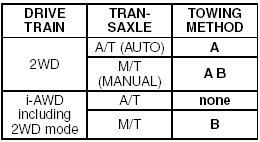
TOWING INSTRUCTION TABLE
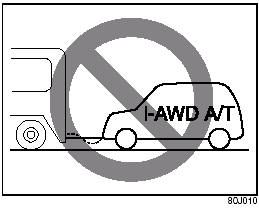
CAUTION:
For the automatic transaxle of intelligent
All Wheel Drive (i-AWD) models,
don’t tow your vehicle behind
another vehicle such as a motorhome,
or the drive train may be seriously
damaged.
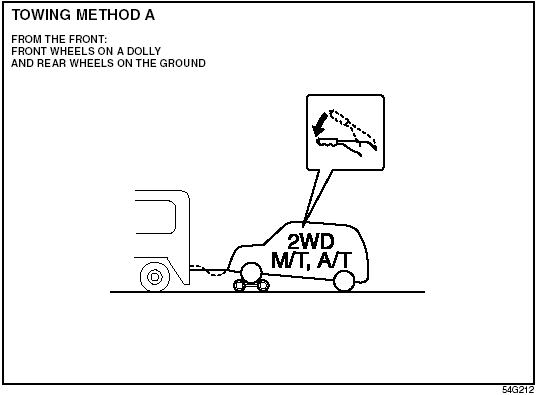
TOWING METHOD A
A: 2WD (except 2WD mode of i-AWD) VEHICLES WITH MANUAL TRANSAXLE OR AUTOMATIC TRANSAXLE
1) Secure the front wheels on a towing dolly according to the instructions provided by the dolly manufacturer.
2) Release the parking brake.
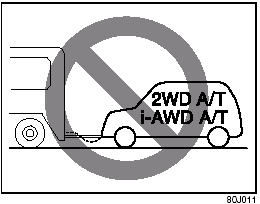
CAUTION:
Towing the 2WD or i-AWD automatic
transaxle vehicles with four wheels
on the ground can result in damage
to the automatic transaxle.
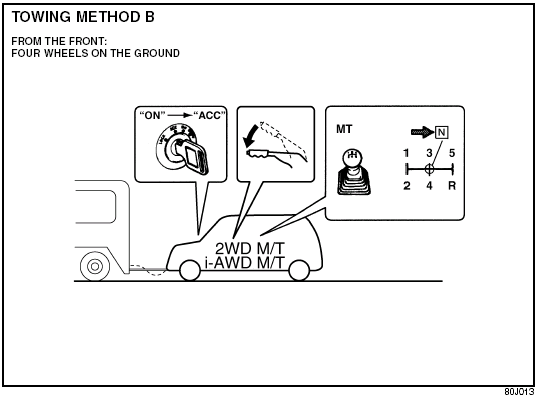
TOWING METHOD B
B: 2WD or i-AWD (including 2WD mode) VEHICLES WITH MANUAL TRANSAXLE
1) Shift the manual transaxle lever into neutral.
2) Turn the ignition key to the “ACC” position to unlock the steering wheel.
3) Release the parking brake.
CAUTION:
The steering column is not strong
enough to withstand shocks transmitted
from the front wheels during
towing. Always unlock the steering
wheel before towing.
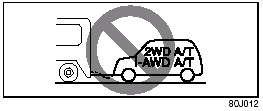
CAUTION:
Towing the 2WD or i-AWD automatic
transaxle vehicles with four wheels
on the ground can result in damage
to the automatic transaxle.
See also:
On-Road
In everyday driving, the Equator rides and handles the way a midsize pickup
should. It's smoother than a full-size and easier to park, but without V-8
power. All the test units were 4x4s; we hoppe ...
Bulb Replacement
WARNING:
• Light bulbs can be hot enough to
burn your finger right after being
turned off. This is true especially
for halogen headlight bulbs.
Replace the bulbs after they
become cool en ...
Braking
Braking
The distance needed to bring any vehicle
to a halt increases with the speed of the
vehicle. The braking distance needed, for
example, at 60 km/h (37 mph) will be
approximately 4 times g ...
